Types of Braces at Specialty Smiles
Welcome to our comprehensive guide on the diverse world of orthodontic care – specifically, the array of different types of braces that can help you achieve the smile you’ve always desired. At Specialty Smiles, we understand that no two smiles are alike. Whether you’re seeking a subtle solution or a bold statement, our expertise in various orthodontic techniques ensures that we can help you create the perfect plan for your braces, based on your individual needs.
Learn more about the options, advantages, and innovations that each type of braces can help you achieve optimal dental health and a confident, radiant smile:
- Traditional Metal Braces
- Clear Braces & Invisalign®
- 6 Month Braces
- Ceramic Braces
- Lingual Braces
- InBrace Smartwire® Braces
- Incognito™ Braces
- Temporary Anchorage Devices (TADs)
Also, check out these FAQs about braces in Miami, as well as our guide to taking care of braces and your brace care routine.
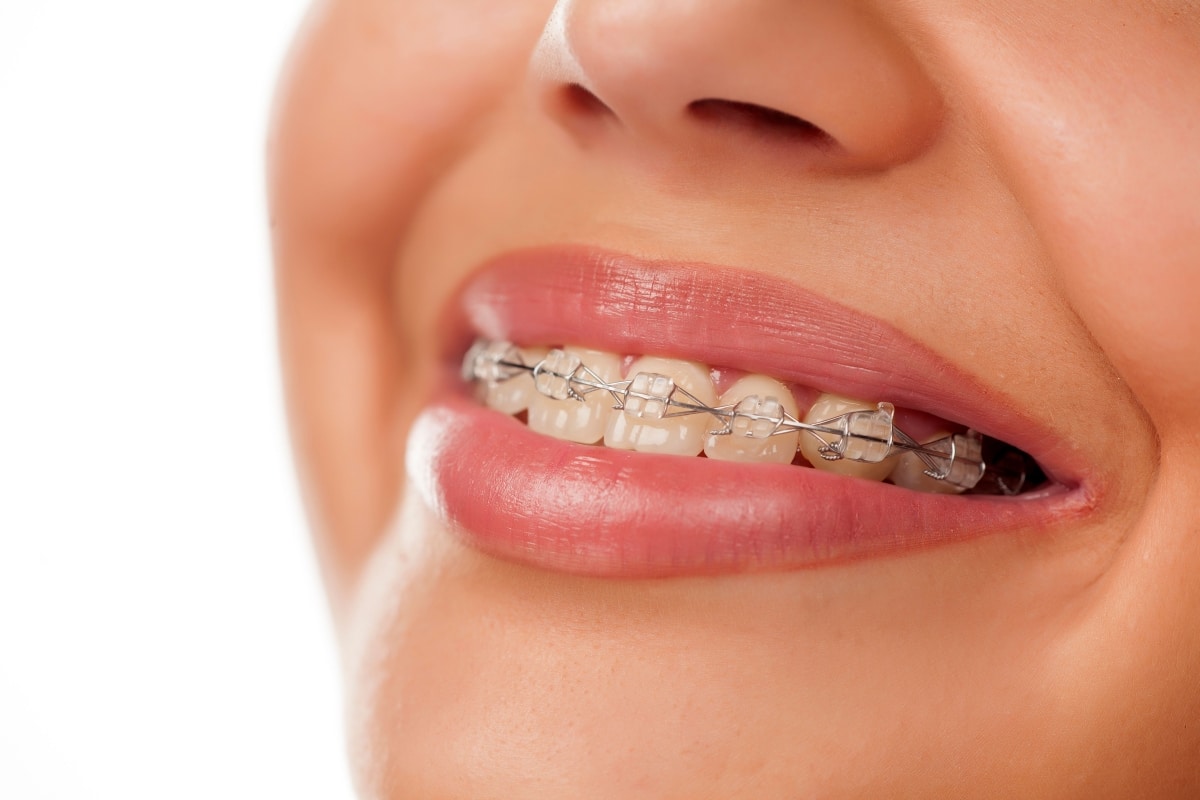
Different Types of Metal Braces
Typically made of high-grade stainless steel, traditional metal braces remain by far the most common type of fixed orthodontic appliances. They consist of metal bands that wrap around the molars in back, and smaller metal brackets that are cemented to the front surfaces of the other teeth. A thin, springy metal wire, running through the brackets, gently guides the teeth into a proper position. This archwire may be fixed to the brackets by flexible elastics, metal ties, or other types of clasps.
There are many good reasons why time-tested metal braces remain popular because they offer a reliable, effective, and economical treatment option. In contrast to the appliances of the past, today’s braces are actually smaller, lighter, easier to care for, and more comfortable to wear. If you want a less traditional look, you may be able to choose colorful elastics for the brackets, or other modifications.

Clear Braces & Invisalign®
When it comes to orthodontic treatments, the visual impact on one’s smile is often a significant consideration. Enter clear braces – a revolutionary take on the traditional braces we’ve known. While they function similarly to the conventional metal versions, they come with an aesthetic twist: the brackets are either clear or tooth-colored, blending seamlessly with your teeth. This design makes them less noticeable, allowing wearers to smile with increased confidence. Ideal for both youngsters conscious of their appearance in school and adults in professional settings, clear braces provide an effective orthodontic solution without compromising on aesthetics. Whether you’re addressing simple dental misalignments or more complex orthodontic issues, clear braces serve as a versatile option.
Invisalign is a popular brand of clear braces. It’s a cutting-edge method that combines the science of orthodontics with the discretion of nearly invisible appliances. The clear plastic aligners are not only custom-made for your teeth, ensuring a perfect fit, but they also offer the convenience of being removable. This means fewer dietary restrictions and an easier oral hygiene routine compared to traditional braces. Whether you’re attending a business meeting or enjoying a social event, with Invisalign, you get the benefits of a teeth-straightening treatment without the aesthetic concerns of metal braces.
What is the average cost of Invisalign® in Miami?
In Miami, the average cost of Invisalign® treatment is typically between $2,500 and $6,000. The key factors that impact the cost of Invisalign® in Miami include:
- The intricacy of your case – as low as $2,500, depending on the complexity of your correction.
- The length of treatment
- Your orthodontic coverage in Miami
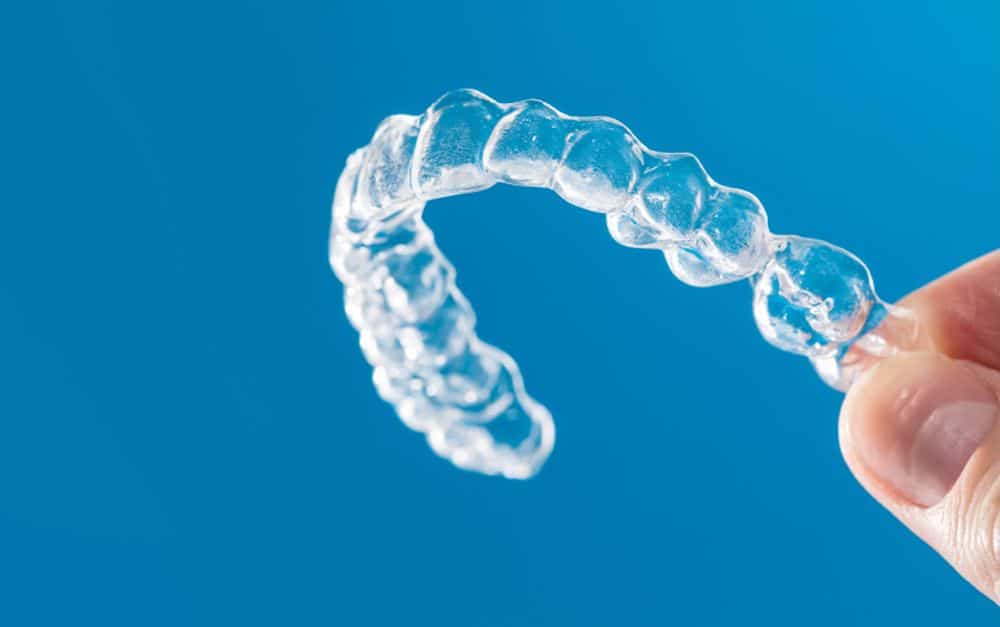
Six Month Braces from Six Month Smiles®
Six Month Braces at Specialty Smiles offer an efficient and affordable approach to achieving a straighter smile. This innovative treatment, known as Six Month Smiles®, focuses specifically on aligning the front teeth that are most visible when you smile. While some patients take a little longer, the desired results are achieved in as fast as 6 months. They’re ideal for anyone 16 years or older with mild to moderate alignment issues. 6 month braces use clear or tooth-colored brackets and wires. This not only makes them less noticeable compared to traditional metal braces, but it adds an element of aesthetic appeal, which is what many adults and teens who are conscious about the appearance of braces want.
6 month braces are primarily intended for those who don’t require extensive dental corrections. This makes it an excellent option for individuals looking to enhance their smile without the longer commitment typically associated with traditional braces. Learn more about this option for affordable braces in Miami.

Ceramic Braces
Clear ceramic braces are a new variation on the traditional system that provides a far less noticeable method of treatment. They use the same components as traditional braces — except that the brackets on the front side of the teeth are made of a translucent ceramic material that blends in with the tooth’s natural color. This system has become a favorite orthodontic option for adults (including some well-known celebrities) because, unless you look closely, it’s hard to notice they’re there.
Several types of ceramic braces are currently available here in Miami, Florida, and the technology is constantly improving. Their aesthetic appeal is undeniable… but there are a few tradeoffs. The ceramic brackets can be less durable than their metal counterparts; plus, while the brackets themselves don’t stain, the elastic bands that attach them to the archwire do (however, these are generally changed each month.) Ceramic braces also cost more than metal — but for many people, the benefit of having an inconspicuous appliance outweighs the costs.
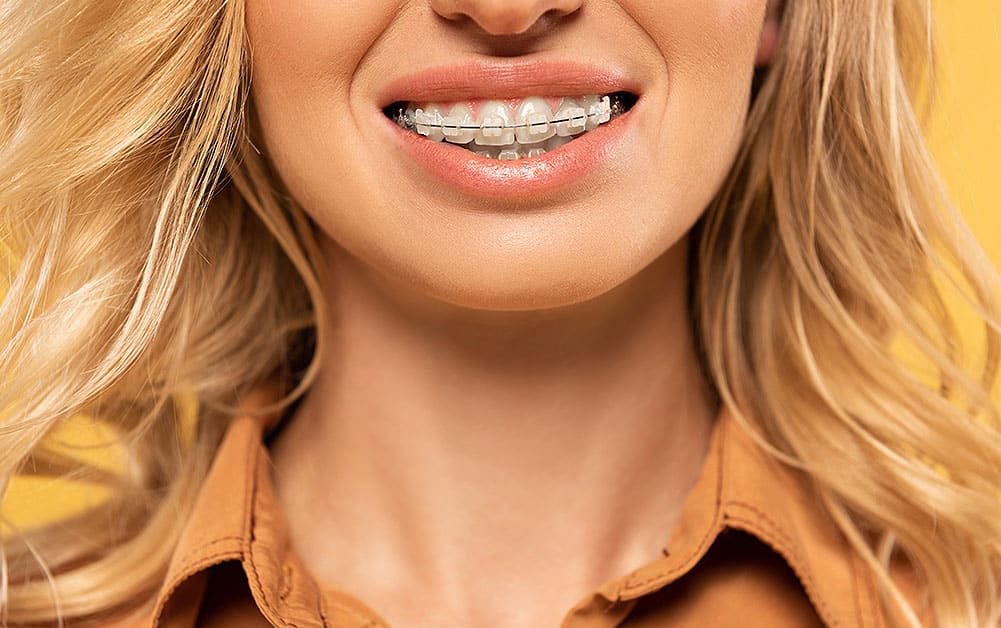
Lingual Braces Miami
While ceramic braces certainly offer a less conspicuous look, there is still another system that allows fixed braces to be truly invisible. In some situations, special appliances called lingual braces can be placed on the tongue side of the teeth. They work the same way other metal braces do — but even though they’re made of metal, they can’t be seen, because they’re hidden behind the teeth themselves!
Lingual braces aren’t the proper treatment for every orthodontic condition, but they are popular here in Florida due to their inconspicuous nature. Special training is required to install them, and they’re significantly more expensive than standard braces. They also generally require a bit more time for the wearer to get used to them, and they may slightly prolong treatment. But if you want the least visible type of fixed appliance — and if you’re a candidate for this treatment option — then lingual braces may be just what you’re looking for.
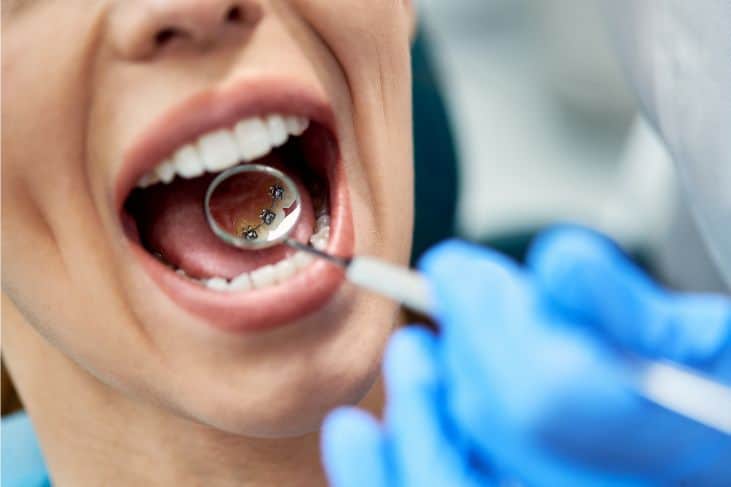
InBrace Smartwire® Braces Near Miami
InBrace Smartwire® braces are an innovative orthodontic treatment option designed to straighten teeth and correct bite issues discreetly and efficiently. These braces combine the principles of traditional braces with modern technology to provide a more comfortable and aesthetically pleasing orthodontic experience.
InBrace Smartwire® braces are effective at addressing a wide range of orthodontic issues, including crowded teeth, spacing issues, overbites, underbites, open bites, and crossbites. The customized nature of these braces ensures that they are working precisely to achieve the desired tooth movements.
Created by orthodontists, the InBrace Smartwire® uses advanced computer modeling and AI to move your teeth in a way that’s fast, healthy and completely under the radar.

Temporary Anchorage Devices (TADs)
Temporary anchorage devices, or TADs, are small titanium anchors used in certain orthodontic cases to help achieve quicker tooth movement with more efficiency and comfort. TADs may be used in addition to braces or as an alternative to headgear.
A strong anesthetic is used to numb the gum tissue and the jaw surrounding the area where the TAD will be placed. Once the area is numb, your doctor will gently place the TAD through the gum tissue and firmly into the jawbone. The placing of a TAD is quick and may be over before you know it. While your doctor is placing the TAD, you may feel slight pressure, but within a day, you will no longer be able to feel the TAD. Your TAD is removed once your treatment is complete, or when it is no longer needed to help straighten your teeth. Removal of a TAD is a comfortable procedure that takes just a few minutes.
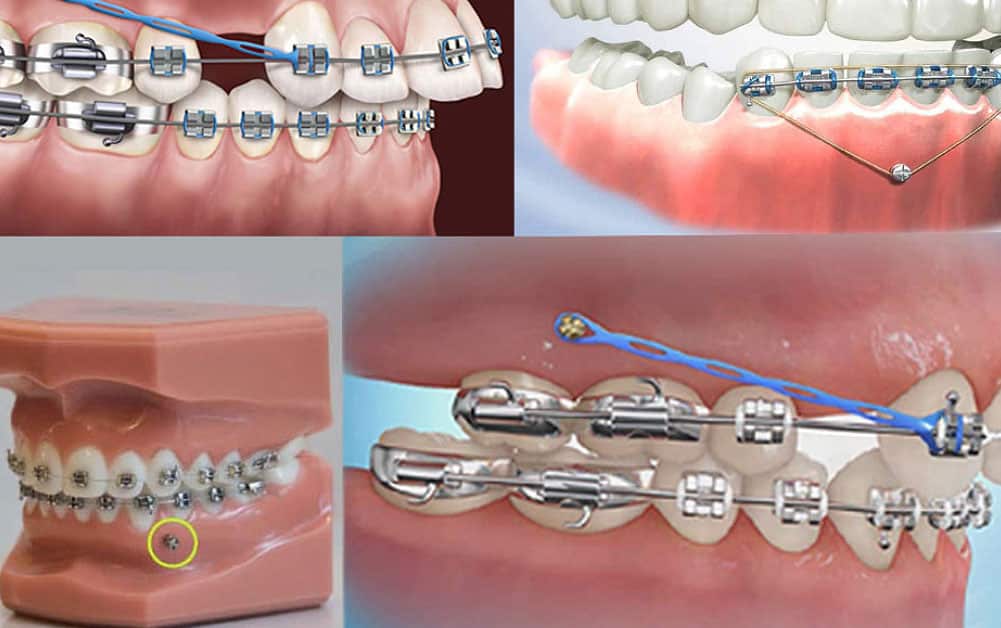
FAQs About Braces in Miami
What are braces?
Orthodontics, which most of us know as braces, describes the art of using appliances to straighten and align teeth. At Specialty Smiles, our professional orthodontist most commonly use braces to move teeth into their proper positioning.
Our Miami orthodontist will bond brackets to your teeth and thread wires through the brackets. The arch wires act as a track, guiding each tooth to its proper position.
There are several different types of braces available to our Specialty Smiles patients, including traditional metal braces and ceramic ‘tooth-colored’ braces.
How much do braces cost near me?
If you are looking for the cost of braces near you, you can expect to pay in the range of $2,500 to $6,000. You should also consider the type of braces you are selecting. Many adults often wonder about the cost of braces. Typically, adult braces cost between $4,000 – $6,000.
We have outlined each type of braces available and the benefits of each. For example, ceramic braces can cost more than metal braces. Weighing out the advantages of each style of braces will help you make the best decision for your specific needs.
Do braces hurt?
When you first get your braces, you may notice that your teeth and mouth feel a little tender or sore. This is perfectly normal and we promise your mouth will not be sore forever! To relieve the pain, we recommend dissolving one teaspoon of salt in eight ounces of lukewarm water. Swish and gargle this solution in your mouth for just a couple of minutes (do not swallow the saltwater).
If the pain is more severe and does not go away after rinsing, you can also try taking a pain reliever, like Tylenol. It is also not uncommon for your lips, cheeks, and tongue to become irritated for one to two weeks as they toughen and become used to the braces. We should have provided you with some wax to put over the braces to lessen the tenderness. If you need some wax, please let us know and we will be happy to provide you with some.
What can you eat with braces?
Don’t worry, there are lots of foods and treats you can still enjoy! However, you will need to take special care to avoid any foods that could damage your new braces or appliances.
Foods to AVOID with braces:
- Chewy foods — bagels, licorice, jerky
- Crunchy foods — popcorn, thick chips, ice
- Sticky foods — caramel, Starburst, Gum, Sour Patch & Gummies
- Hard foods — nuts, hard candies
- Foods that require biting into — corn on the cob (cut it off the cob), apples & carrots should be cut into small pieces
- See more foods to avoid with braces
Great foods to START with your new braces:
- Dairy — soft cheese, pudding, milk-based drinks
- Breads — soft tortillas, pancakes, muffins without nuts
- Grains — pasta, rice, soups
- Meats/Poultry — soft cooked chicken, meatballs, lunch meats
- Seafood — tuna, salmon, crab cakes
- Vegetables — mashed potatoes, steamed spinach, beans
- Fruits — applesauce, bananas, fruit juice, oranges
- Treats — ice cream without nuts, milkshakes, Jell-O, soft cake & cookies
What happens if I have a loose tooth with braces?
If your teeth begin feeling a little loose, don’t worry; this is normal! Your braces must first loosen your teeth to move them into the right position. Once your teeth have been repositioned, they will no longer be loose.
What happens if my wire comes loose?
The wires and bands on your braces may come loose. If this happens, please contact us as soon as possible so that we can determine whether you will need to come in for a repair. If any piece of your appliance comes off be sure to save it and bring it to the office with you at your next visit.
You can temporarily fix the loose wire by using the back of a spoon or the eraser end of a pencil to carefully and gently push the wire back into place. If the loose wire is causing irritation to your lips or cheeks put wax or a wet cotton ball over the broken wire to relieve the pain.
How do I take care of my braces?
Damaged appliances can increase the length of your treatment process, so be sure to take care of all your braces and orthodontic appliances. Your teeth and jaw can only move into their correct positions if you consistently wear the rubber bands, headgear, retainer, or other appliances prescribed by Dr. Sedeño or Dr. Alfonso.
Can I play sports with braces?
Game, Set, Match — we have great news for athletes! You can still play sports even while undergoing orthodontic treatment! If you do play sports, it’s recommended that you wear a mouthguard to protect your teeth and your appliance. Let our staff know if you need help finding the right mouthguard for the best protection as we do have options at the practice available for purchase. In case of a sports emergency, be sure to immediately check your mouth and appliance for damage. If you notice any loose teeth or appliance damage, please contact our office right away. You can temporarily relieve the discomfort by applying wax or rinsing your mouth with warm saltwater.
Can I play an instrument with braces?
Whether you play the kazoo or the saxophone, it’s no problem with braces. Our orthodontic team will guide you on the proper steps to avoid any disruption in your training. There is a short adjustment period where you will have to retrain your lips around the instrument, but it is no big deal. We got you covered.
What can I do to relieve discomfort caused by my TAD?
If you do feel any discomfort from having your TADs placed, Tylenol® is recommended to help relieve your pain. If you continue to experience discomfort days after your treatment, please contact your dentist as soon as possible.
How can I keep my TAD clean?
A TAD can be cleaned the same way you clean your braces: by brushing your teeth at least three times a day. When your TAD is placed, we will also provide you with an antimicrobial mouthwash that you will need to use twice a day.



